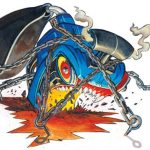|
Q. I’ve tried everything to get good
resaw results on my bandsaw,
but the blade still wanders. What
gives?
A.
If you use a
sharp blade
designed for resawing, you
compensate for drift angle,
you’ve set the proper tension and
you’re still getting bad results
resawing, there’s only one other
possibility: Your wheels need
alignment. Pop the hood (well,
the wheel covers) on your saw
and put a straightedge across the
rim of both wheels (Photo 1). If
there’s a gap, your wheels are not
operating in the same plane.
Misaligned wheels are a problem
for bandsaws with crowned
wheels. If your saw is 16 in. or
smaller, chances are it has crowned
wheels. A crowned wheel has a
slight hump where the blade rides.
The crown is designed to force the
blade toward the center of the
wheel and aid in tracking the
blade. If the two crowned surfaces
are not in the same plane, they
pull against each other, robbing
the saw of power and accuracy.
Fortunately, the problem is easy
to fix on most saws. First, measure
the misalignment (Photo 2). Next,
remove the blade and the wheel
and apply the appropriate shim(s)
(Photo 3). Most saws have thin
washers behind each wheel. You
may find removing the stock washer
and replacing it with a thicker
one is just the ticket.
Reattach the wheel and give
your saw a spin.
Note: Some saws have an
adjustable bottom wheel. Just
loosen the setscrew and slide the
bottom wheel in or out the appropriate
amount.
This story originally appeared in American Woodworker November 2004, issue #111.
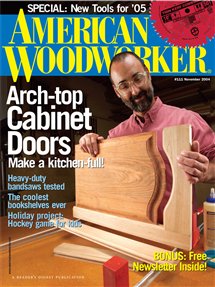
November 2004, issue #111
Purchase this back issue.
|
|
Click any image to view a larger version.
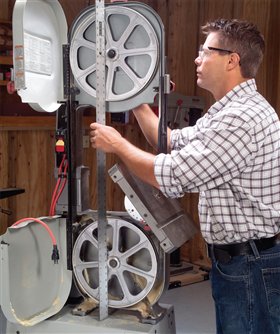
1. Check the wheel alignment with your resaw blade mounted and tensioned.
It may be necessary to adjust the tracking of the upper wheel to make the
faces of both rims parallel.
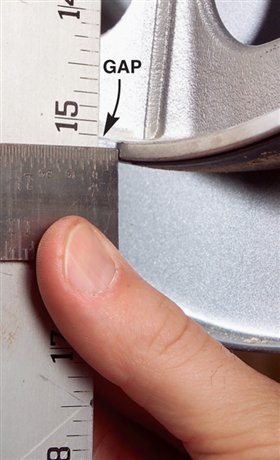
2. Measure the gap with a
ruler calibrated to at
least 1/32 in. or with a dial
caliper.
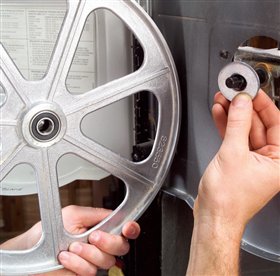
3. Add or replace washers behind the wheel
to achieve alignment. For small adjustments,
use metal shim stock or metal dado
blade shims behind the washer.
|












